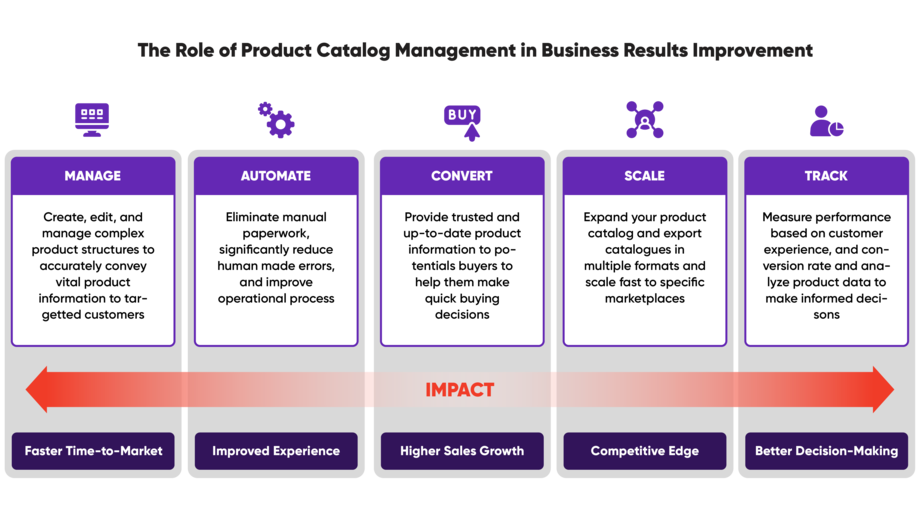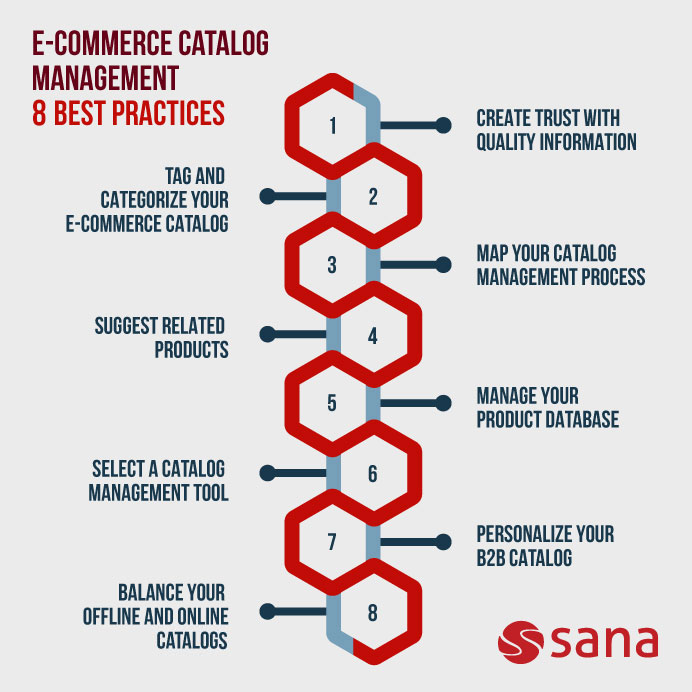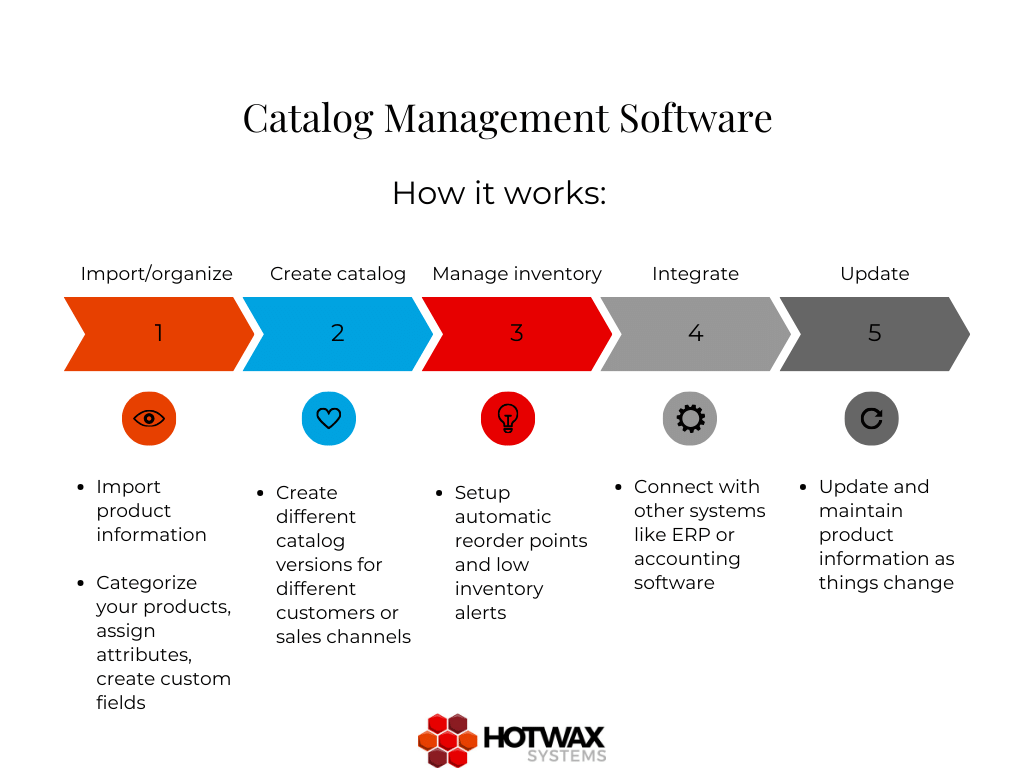
If you’ve ever tried selling online, you already know how chaotic things can get when your product data isn’t organized properly. One missing image here, a wrong price there, and suddenly your customers are bouncing — and your sales are slipping. That’s exactly why catalog management matters in e-commerce.
At its core, catalog management is about keeping your product data clean, accurate, and consistent across all your sales channels — whether it’s your own website, Amazon, or anywhere else you’re listing products. It’s not just about uploading products and hoping for the best. It’s about building a product catalog that’s easy to manage behind the scenes and easy to shop from on the front end.
Here’s the kicker: according to a report by Retail Systems Research, 54% of retailers say that inconsistent product information is one of their biggest challenges when selling across channels. And guess what? That kind of inconsistency is exactly what leads to lost sales, frustrated customers, and poor SEO performance.
So if you’re still managing your product data with messy spreadsheets or outdated systems, this article is for you. We’re going to dig into what catalog management actually involves, why it’s so important, and how you can streamline the whole process using the right tools and best practices.
Let’s get into it.
What Is Catalog Management in E-commerce and Why It’s More Than Just Product Listings

Image Source: Pimcore
So, what exactly is catalog management? A lot of people confuse it with just uploading products to their online store. But there’s way more to it than that.
Catalog management in e-commerce is all about creating a structured system to organize, update, and maintain all your product data — including titles, prices, SKUs, images, descriptions, categories, specifications, inventory status, and more. It’s what keeps your digital shelves neat, searchable, and ready to convert visitors into customers.
Here’s the thing: just listing products doesn’t cut it anymore. If you’re running even a medium-sized store, you’re probably dealing with hundreds or thousands of SKUs. Now add in seasonal updates, supplier changes, price shifts, and multiple sales platforms — and suddenly, you’ve got a full-blown data management challenge on your hands.
That’s where catalog management shines. It makes sure your:
- Inventory stays accurate across all your platforms.
- Pricing is consistent and updates in real-time when needed.
- Products are easy to find thanks to smart categories and metadata.
- Descriptions and specs are complete, helping customers make faster buying decisions.
In short, good product catalog management makes your backend operations smoother and gives your customers a better shopping experience — which, let’s be honest, is the whole point.
Want people to find your products on search engines and marketplaces? Want them to trust the info they see? That starts with strong catalog management.
Why Product Catalog Management Is So Important for E-commerce Growth
As your product range grows, keeping everything organized gets trickier — and the risks of sloppy catalog management start to show. If you’ve ever had customers complain about wrong specs, out-of-stock items still listed as available, or confusing search results, you’ve already felt the impact.
So, why is product catalog management so crucial?
The Chaos of Large Catalogs
When you’re managing a few dozen products, it’s easy to stay on top of things. But once you scale up — maybe you’re selling across categories, working with multiple suppliers, or syncing to multiple platforms — things can get messy, fast.
You might end up with:
- Duplicate entries that confuse customers and mess with your inventory count.
- Inconsistent product names and specs that hurt your SEO and user experience.
- Missing or outdated information that leads to product returns or cart abandonment.
It doesn’t take much for these small errors to add up to big losses.
Lost Sales and Bad Experiences
Let’s say someone’s looking for a “wireless Bluetooth speaker under $100” — and you actually have ten great options. But because your product titles don’t include key phrases, or your filters aren’t set up correctly, none of those show up in their search.
That’s a lost sale.
Now imagine that happening every day, across your site and other marketplaces you sell on. That’s why poorly managed product data can quietly kill your growth.
On the flip side, when your catalog is clean, consistent, and optimized:
- Products are easier to discover through search and navigation.
- Customers get all the details they need to make a decision quickly.
- You reduce return rates and complaints because expectations match reality.
Structured Data = Better Conversions
Structured ecommerce product data gives customers confidence. Things like high-quality images, complete specs, accurate dimensions, and customer reviews all play a role in decision-making.
In fact, a study by Salsify found that 87% of shoppers say product content is extremely or very important when deciding to buy. That’s huge. And that content all comes from your catalog.
So if you want to boost conversions, reduce friction, and grow your sales, improving your product catalog management should be high on your priority list.
Best Practices for Organizing and Optimizing Product Data That Actually Work

Image Source: Sana-Commerce
Once you realize how much of your sales performance depends on your product catalog, it’s natural to want to clean it up and get it running like a well-oiled machine. But where do you start?
Here are some tried-and-true best practices for organizing and optimizing your ecommerce product data so that it works for you — not against you.
Start with a Solid Product Taxonomy
Think of taxonomy as your catalog’s blueprint. It’s how you group and categorize products so people (and search engines) can actually find what they’re looking for.
If your categories are inconsistent, or if similar items are scattered in different places, customers will get frustrated fast. That’s when you lose them.
A solid taxonomy means:
- Logical product categories and subcategories.
- Consistent naming conventions.
- Clear relationships between product types (e.g., “Laptop Bags” should fall under “Accessories,” not get mixed in with “Laptops”).
The more intuitive your structure is, the easier it’ll be to scale — and to automate.
Use Structured Attributes and Metadata
Here’s where you turn “okay” product data into great product data.
Let’s say you’re selling shoes. Don’t just upload the product name and image. Add structured attributes like size, color, material, heel height, and gender. Metadata like brand, style type, and usage (e.g., “running” or “casual”) can also help.
This helps:
- Improve searchability on your site.
- Make filters work properly.
- Power better recommendations and cross-sells.
- Feed rich snippets to Google (which boosts your SEO).
Structured product data makes your catalog smarter — and makes shopping easier.
Automate Bulk Updates Wherever You Can
If you’re updating product details manually one by one, stop. That’s a recipe for human error and a total time sink.
Whether you’re adding new products, changing prices, or updating stock levels, look for ways to automate:
- Bulk uploads through spreadsheets or CSVs.
- Dynamic pricing tools that update based on competition or inventory.
- Real-time syncing across multiple platforms.
Automation doesn’t just save time — it also reduces errors and ensures consistency across your catalog.
Don’t Skimp on Descriptions, Images, and Specs
This might sound obvious, but you’d be surprised how many stores still leave product descriptions half-finished or images missing.
Your product page is your sales pitch. That’s why high-quality images, detailed descriptions, and accurate specifications are non-negotiable. They help customers understand what they’re buying — and prevent returns down the line.
A great product description should:
- Be clear and conversational (just like this article).
- Highlight the product’s key features and benefits.
- Include important specs (dimensions, materials, compatibility, etc.).
Oh, and don’t forget alt tags on images — they help with both accessibility and SEO.
What Is the Best Software for E-commerce Product Catalog Management?

Image Source: hot wax systems
If you’re trying to manage a growing catalog with spreadsheets, manual edits, or clunky backend systems, it’s only a matter of time before something breaks — or worse, breaks your business.
That’s where catalog management software comes in.
So let’s answer the big question: What is the best software for e-commerce product catalog management? The short answer? It depends on your business size, the complexity of your catalog, and how many channels you sell on. But the good news is, there are solid tools out there for just about every setup.
Key Features to Look For in a Catalog Management Tool
Before picking any software, it’s important to know what to look for. The best catalog management tools usually have a few things in common:
- Automation Capabilities
You want to be able to automate routine tasks like updating prices, syncing inventory, and publishing products across platforms. This cuts down on manual work and helps avoid mistakes. - Real-Time Updates
If a product goes out of stock or a price changes, your system should reflect that instantly across all your sales channels — no delays, no surprises. - Multi-Channel Integration
Whether you’re selling on Shopify, Amazon, Walmart, or your own site, a good tool should help you manage everything from one dashboard. This is especially useful for marketplace sellers juggling multiple listings. - Data Validation and Cleanup
Look for tools that flag issues like missing descriptions, duplicate SKUs, or inconsistent formatting. Clean data = better performance.
Popular Tools You Might Explore
There are quite a few options in the market, depending on your business size and budget. A few names that often come up include:
- Pimcore – Good for larger businesses needing custom data models.
- Akeneo – Known for strong product information management (PIM) capabilities.
- Sales Layer – Great for real-time updates and integrations.
- ChannelAdvisor – Ideal for managing listings across marketplaces.
- Shopify Plus – Comes with built-in catalog management, though limited for complex needs.
Each platform has its pros and cons — what matters is choosing one that fits your workflow and gives you room to grow.
How PromptCloud Fits In
Now, here’s where PromptCloud can really boost your catalog game. While catalog software helps you manage your data, PromptCloud helps you get that data in the first place — and keep it fresh.
With PromptCloud’s web scraping and data extraction services, you can:
- Pull accurate product data from competitor sites or supplier catalogs.
- Track prices, descriptions, stock availability, and more in real-time.
- Feed this data directly into your catalog to fill gaps, update listings, or improve accuracy.
In short, PromptCloud acts like the fuel your catalog engine needs — ensuring the data feeding into your system is clean, complete, and always up to date.
Common Catalog Management Challenges and How to Overcome Them
Even with the best tools and intentions, managing a product catalog isn’t always smooth sailing. Whether you’re running a marketplace or a niche online store, a few challenges come up again and again. The good news? Most of them are solvable — if you know what to look for.
Handling Large Datasets with Constant Updates
As your business grows, so does your catalog. You’re no longer dealing with 50 or 100 SKUs. Now it’s hundreds or even thousands of products — all with their own attributes, variations, and supply chain dependencies.
The bigger the catalog, the harder it gets to:
- Keep product info consistent.
- Spot outdated listings.
- Push changes across platforms without delays.
The fix: Automate wherever possible. Use catalog management software that supports bulk editing, real-time syncing, and dynamic updates. If you’re sourcing products from multiple vendors or competitors, services like PromptCloud can help you scrape and update data automatically.
Managing Multiple Sales Channels Without Losing Your Mind
Selling on just one platform? That’s rare. These days, most e-commerce brands are on at least two — say, their own website and Amazon. Some are juggling five or six: eBay, Walmart, Flipkart, social commerce platforms, and more.
Each of these has different listing requirements, update formats, and customer expectations. One small mistake on one platform could cost you visibility — or worse, sales.
The fix: Centralize your catalog. Use tools that sync product data to all your sales channels from a single source of truth. That way, if you change the price on one product or update its availability, it reflects everywhere. This is where catalog management truly pays off.
Duplicate Listings and Inconsistent Product Data
Let’s say the same product gets uploaded twice under slightly different names. One says “Wireless Mouse,” the other says “Bluetooth Mouse – Black.” Not only does this confuse your customers, but it can mess with your inventory count and even hurt your SEO.
The fix: Use data validation tools to flag duplicates or inconsistencies. A good catalog management system will highlight entries that are missing images, descriptions, or product identifiers. And if you’re pulling in product data from outside sources, make sure you’re using a service like PromptCloud that cleans and structures that data for you.
Missing or Poor-Quality Product Attributes
Shoppers want details. If you’re missing specs, size charts, compatibility info, or usage guides, they’ll bounce. And worse — they might go to a competitor that has clearer listings.
The fix: Create a content standard for your catalog. Make sure every product has complete, high-quality info — and refresh it regularly. If you’re updating descriptions manually, you’re probably falling behind. This is where automated data enrichment from third-party sources can make a big difference.
How PromptCloud Supports E-commerce Product Data Management
Managing a product catalog isn’t just about organizing what you already have — it’s also about staying ahead of the market. That means continuously enriching, updating, and validating your product data across platforms, suppliers, and categories. That’s where PromptCloud makes a real difference.
Accurate and Scalable Product Data Extraction
Most businesses don’t have time (or the bandwidth) to manually collect and clean product data from dozens of sources. But if you’re relying on third-party sellers, distributors, or competitors to shape your own catalog, you need that data — and it needs to be right.
With PromptCloud’s web scraping and data extraction solutions, you can:
- Automatically pull structured product data from competitor sites, marketplaces, or manufacturer catalogs.
- Capture key product details like name, price, specifications, images, and availability — without lifting a finger.
- Maintain a clean, current, and comprehensive product catalog that’s always aligned with the market.
Whether you need to update thousands of SKUs weekly or monitor daily price fluctuations, PromptCloud can scale with you.
Real-Time Product Monitoring for Catalog Accuracy
Let’s say a product goes out of stock at your supplier — but your website still shows it as available. Now you’re dealing with customer complaints, order cancellations, and a hit to your reputation.
PromptCloud can help you monitor product availability and pricing in real time, ensuring that your catalog reflects what’s actually in stock, at the right price, across every sales channel.
This also means:
- Fewer lost sales due to outdated info.
- Faster response to market changes (like competitor price drops or product launches).
- Better customer experience because shoppers can trust what they see.
Enriching Catalog Data with External Intelligence
A lot of businesses struggle with incomplete product listings — especially when onboarding new SKUs from suppliers. Maybe you have the product name and a blurry photo but nothing else.
PromptCloud’s scraping solutions help you enrich your existing catalog by pulling missing data from trusted sources. That means:
- Filling in technical specs.
- Adding multiple images.
- Pulling in long-form descriptions.
- Matching categories and variants more accurately.
By feeding richer, more detailed data into your product catalog, you boost search performance, conversions, and customer trust — all without putting extra strain on your internal team.
Take Control of Your Product Catalog with Smarter Data and Automation
Catalog management isn’t just about organizing product listings — it’s about building a strong foundation for better sales, smoother operations, and a standout customer experience. When your product data is clean, consistent, and up to date, everything else works better — from search rankings to customer trust. Investing in the right tools, automation, and data partners like PromptCloud can make catalog management a growth driver instead of a time drain.
Want to see how PromptCloud can help you streamline your product catalog with accurate, real-time data? Get in touch with us today.



















